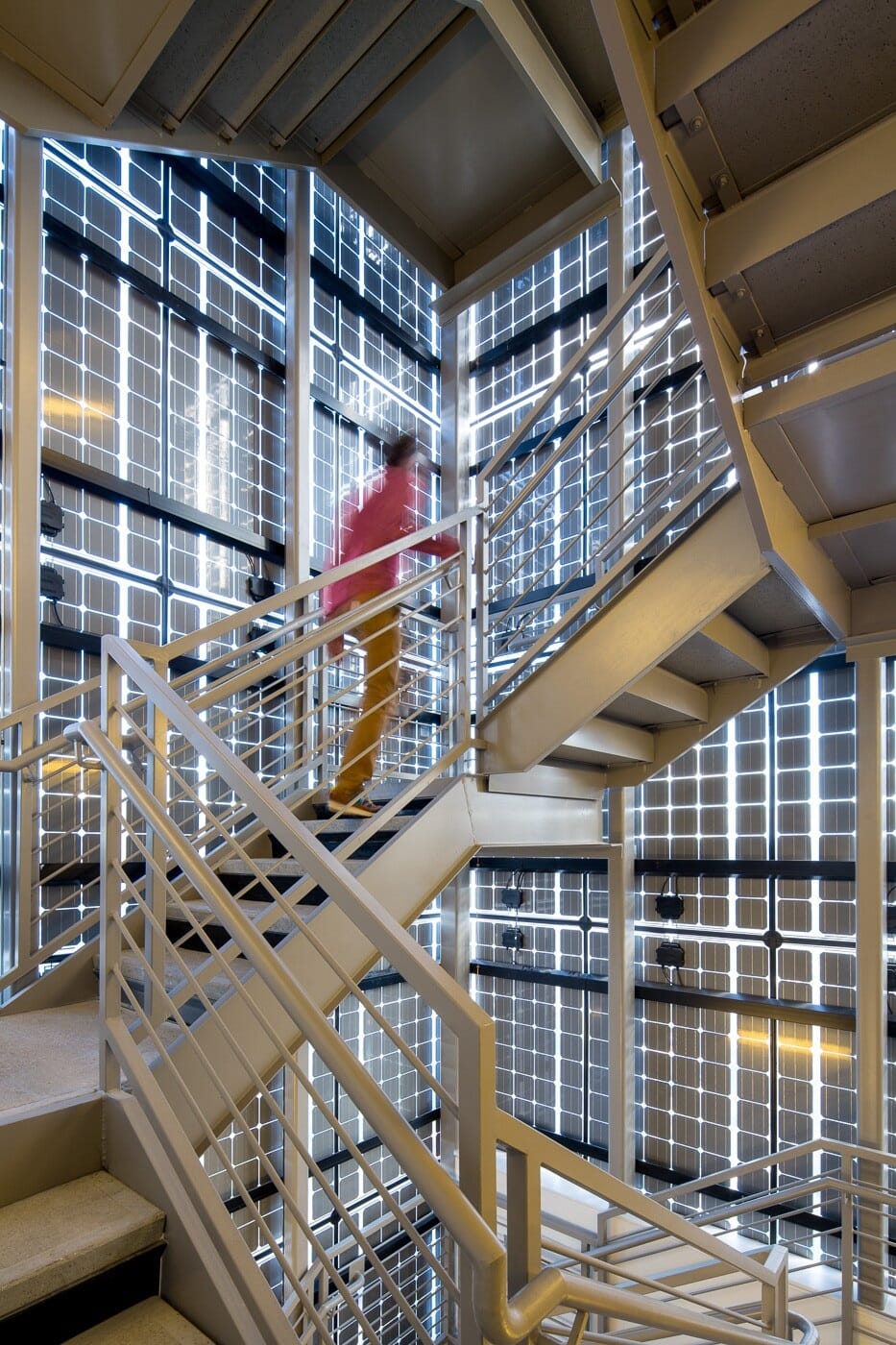Architectural Solar: Integrating Photovoltaics into the Built Environment
Architectural solar solutions, which integrate photovoltaic (PV) modules directly into structures, are redefining the way we generate and utilize renewable energy. These innovations blend aesthetics with functionality, turning everyday structures into power-generating assets. Among the most effective applications are solar carports, canopies, awnings, walkways, pergolas, and the increasingly popular building-integrated photovoltaics (BIPV), including vertical facades. The evolution of solar technology has moved far beyond conventional rooftop panels. Discover how architectural solar designs can add cutting-edge technology and aesthetic elements to your projects!
The Rise of Architectural Solar
Traditional solar installations often involve mounting panels on rooftops or deploying large-scale ground-mounted arrays. However, as the demand for renewable energy grows alongside the need for optimized urban space, architectural solar is emerging as a compelling solution. This approach allows for dual-purpose structures that not only provide shelter and shade but also generate electricity.
Architectural solar solutions are particularly advantageous in urban environments where space constraints make conventional solar installations challenging. By seamlessly integrating solar panels into buildings and infrastructure, these solutions maximize energy production without requiring additional land use. Beautiful solar panel shade structures is one of the value-added solutions Lumos brings to the built environment.
Solar Carports and Canopies
Solar carports and canopies are among the most practical and widespread applications of architectural solar. Unlike traditional parking structures, these systems feature overhead solar modules that provide shade and weather protection while generating renewable energy.
Key Benefits:
- Energy Generation: Parking lots become clean energy power stations, supplying electricity for nearby buildings, EV charging stations, or grid integration.
- Sustainability Goals: Businesses, municipalities, and universities can reduce their carbon footprints while meeting renewable energy mandates.
- Weather Protection: Vehicles benefit from shade in summer and shelter from rain and snow in adverse conditions.
- Revenue Generation: Excess energy can be sold back to the grid or used to offset facility energy costs.
These structures can be modular and prefabricated for quick deployment or custom-designed for specific architectural aesthetics. The strongest solutions on the market offer glass-on-glass bifacial modules, which capture sunlight from both sides to enhance efficiency.
Solar Awnings and Walkways
Solar awnings and walkways extend the functionality of architectural solar into pedestrian spaces and building exteriors. These solutions offer both aesthetic and practical advantages by incorporating PV modules into structures that would otherwise serve only as shade or weather protection.
Key Benefits:
- Energy Efficiency: Buildings equipped with solar awnings can reduce reliance on grid electricity while also improving passive cooling by limiting direct sunlight on windows.
- Urban Application: Walkways with integrated PV modules provide covered, illuminated paths while harnessing solar energy for nearby facilities.
- Seamless Integration: Solar awnings and walkways can be designed to complement existing architectural elements, ensuring a cohesive visual appeal.
These solutions are particularly valuable for campuses, transit hubs, and commercial buildings aiming to incorporate renewable energy without compromising design.
Solar Pergolas and Outdoor Structures
Solar pergolas and similar outdoor structures bring a unique aesthetic component to architectural solar. These installations are ideal for residential and commercial applications, providing shaded spaces for leisure while producing clean energy.
Key Benefits:
- Blended Functionality: Outdoor dining areas, parks, and courtyards can benefit from renewable energy while maintaining stylish architectural features.
- Customization: Unlike standard solar panels, architectural solar allows for creative layouts, materials, and colors to enhance visual appeal.
- Multi-Purpose Use: Solar pergolas can power outdoor lighting, fans, or even integrated charging stations.
Building-Integrated Photovoltaics (BIPV)
Building-integrated photovoltaics (BIPV) take solar technology to the next level by embedding PV modules directly into a building’s envelope. Instead of traditional cladding materials, these structures use solar panels as an essential component of the building’s design.
Key Applications:
- Solar Facades: Vertical solar panels replace traditional building materials, generating energy while maintaining modern aesthetics.
-
Solar Glass: Transparent or semi-transparent PV glass can be used in windows, skylights, and curtain walls to produce electricity without obstructing natural light.
- Roofing Systems: BIPV panels can replace standard roofing materials, providing both structural integrity and solar energy generation.
Benefits of BIPV:
- Enhanced Aesthetics: Unlike conventional panels, BIPV solutions blend seamlessly with architectural designs.
- Energy Savings: Solar-integrated facades reduce cooling loads by limiting solar heat gain while generating electricity.
- Space Optimization: BIPV eliminates the need for separate solar installations, making it ideal for urban environments.
- Durability and Strength: The strongest BIPV solutions feature glass-on-glass construction, providing superior weather resistance and longevity.
The Growing Role of Vertical Solar Facades
One of the most exciting trends in architectural solar is the development of vertical solar facades. While rooftop solar is limited by space and orientation, vertical facades provide an opportunity to capture energy from sunlight throughout the day, particularly in densely populated cities where rooftop access is constrained.
Why Vertical Solar Makes Sense:
- Maximized Surface Area: High-rise buildings have significant vertical real estate that can be leveraged for solar energy production.
- Improved Energy Capture: Bifacial vertical solar panels can harvest sunlight from reflections off surrounding buildings, streets, and surfaces.
- Architectural Harmony: Unlike retrofitted rooftop solar, vertical BIPV is designed from the ground up to be an integral part of a building’s aesthetic.
As technology advances, transparent and colored PV solutions are making vertical solar facades an attractive choice for architects and developers looking to meet sustainability goals while maintaining design flexibility.
The Future of Architectural Solar
As cities push toward net-zero energy targets and businesses seek sustainable solutions, architectural solar is poised to play a crucial role in the future of the built environment. With advancements in module efficiency, durability, and design customization, the possibilities for integrating solar power into everyday structures continue to expand.
From solar carports and pergolas to vertical facades and transparent PV glass, architectural solar is transforming buildings into energy-generating assets. These innovations not only reduce reliance on fossil fuels but also enhance urban landscapes with sustainable, aesthetically pleasing solutions. As adoption grows, the built environment will evolve into a more self-sufficient, clean energy-powered ecosystem that benefits businesses, communities, and the planet alike.
Lumos also offers AIA CE credits to learn more about integrating solar into architectural designs. AIA is a great resource for bringing the latest design elements to your projects.


